Coffee plants, particularly the Coffea Arabica species, require meticulous care to produce high-quality beans. An essential aspect of this care involves selecting the right fertilizer to ensure robust growth and optimal yield. Understanding the specific nutrient requirements of coffee plants, such as nitrogen, phosphorus, and potassium, can significantly influence their health and production capacity. This blog aims to demystify the complex process of fertilization for Coffea Arabica by exploring the types of fertilizers available, their application methods, and the timing necessary to achieve the best results. Whether you’re a seasoned coffee grower or a hobbyist cultivating plants at home, this guide will provide invaluable insights into nurturing your coffee plants to their fullest potential.
What is the Best Fertilizer for Coffee Plants?
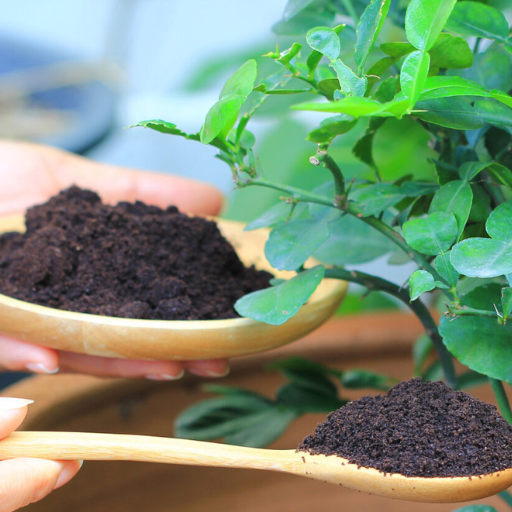
NPK Ratios: A Guide to Fertilizing Coffee
Obtaining the appropriate NPK ratio (Nitrogen, Phosphorus and Potassium) for Coffea Arabica plants is critical to their well being. For instance, a ratio of 2:1:3 is often recommended as it is more balanced. Each of these nutrients has different benefits: nitrogen is important in developing leaves. It stems, phosphorus in root and flower formation, and potassium in disease resistance and bean quality. Different growth stages in coffee plants necessitate different nutrients. In early stages, out of the three above mentioned nutrients, it is beneficial to use more nitrogen, whereas when the plant is bearing fruits and flowers, it is advisable to increase phosphorus and potassium nutrients. In simple terms, a coffee plant develops in stages, and different NPK ratios should be used for different stages in order to promote plant growth and consequent bean harvest.
Organic vs. Synthetic Fertilizers for Coffee Plants
There are a number of issues which arise when one is choosing between organic and synthetic fertilizers for coffee plants. Organic fertilizers like compost, manure or bone meal are natural solutions which can boost soil quality by improving its structure and on top of it, the soil has many more micro-organisms hence increased activity on the soil too. This in the long term can lead to increased soil fertility making it sustainable. The disadvantage with organic solutions is that nutrients are released at very slow rates, meaning that during growth periods when the plant is mature, this kind of supply will not be sufficient for the plants.
Further, the composition of synthetic fertilizers is such that they are made to meet the exact nutritional requirement of the plant. These nutrients are readily available which helps the plant’s growth and productivity to occur faster. But it must be noted that if one becomes overly dependent on synthetics, the soil will become eroded with time, and there is always the problem of chemical runoff contaminating the environment.
To conclude, it depends primarily on the users’ willingness to use organic or synthetic fertilizers based on their corresponding benefits in terms of crop yield, soil longevity, and ecology. Some coffee producers may also build soil health through organic methods while using synthetic fertilizers to enhance crop production due to nutritional deficiencies.
Essential Elements for the Healthy Growth of Coffee
Coffee plants need a decent amount of essential nutrients to flourish and yield high-quality beans. Nitrogen (N) is needed for profuse vegetative growth, branching, and leaf expansion. It’s an important biochemical of chlorophyll, which assists in photosynthesis. Phosphorus (P) is also needed in energy transformations, root development, and the flowering stages to promote the structure of healthy plants. Potassium (K) promotes good health in plants by controlling water use and enhancing disease and pest resistance. As well as calcium, magnesium, and sulfur as secondary nutrients are important in fortifying cell walls, enhancing nutrient utilization, and accelerating enzymes’ activities. Iron, manganese, and zinc are all trace elements that are also needed except in smaller quantities but are essential to aid metabolic activities so that deficiencies that hinder plant growth don’t occur. Proper attention to these key nutrients enables coffee crop growers’ plants to grow in healthy conditions.
How to Care for Coffee Plants in the Garden?
Perfect soil Conditions for Coffee Growing
Coffee grows best in soils with good drainage that prevent the roots from standing in water. The preferred pH range for coffee is in the zone between 6 and 6.5, being slightly acidic, which enhances nutrient availability. Also, the soil must be a loamy one, having adequate amounts of sand, silt and clay which gives it structural strength and sufficient air for the roots. There is a need for regular addition of organic matter like compost or well-decomposed organic material, to improve soil texture, nutrients and water retention. For coffee plants to realize optimum growth and yield, an ideal situation with normalized water conditions free from flooding and drought is needed.
Watering Procedures Towards the Coffee Plant Maintenance
When bringing up coffee plants, it is crucial to emphasize watering. It is very important to provide soil moisture content within reasonable limits in coffee growing processes. But, suffocating the roots of plant by excessive water should be avoided. Wilting of the leaves causing the plant to be heat-stressed or lacking in drought is also not suitable. As much as a coffee plant requires moisture, it should not drain excess water instead once the upper surface is dry, it should be soaked. Such a method helps iensurethat moisture goes deeply into the roots’ region. This helps in proper rooting as plants grow sturdy on their roots. Water conservation is also possible with drip systems or soaker hoses with water going only where it is needed. It is wise to water the plants according to the water requirements of these plants. For instance seasonal weather conditions dictate watering with regards to the amount of rainfall that has occurred.
Purposeful Pruning of the Coffee Tree for Better Yields
A regular scheme of pruning out of the coffee tree should be implemented as a matter of care and for improving productivity. Pruning redacts the size of the tree and modifies its shape while promoting the efficient flow of air and light through the canopy. This in turn has a positive impact on the growth of fruiting branches and the number of new shoots that emerge. When pruning, attention should be given to cutting only the dead or diseased plants, going for branches that cross each other or too many that obstruct light and airflow. A tree with reasonable height simplifies the tasks of maintenance and harvesting ,which directly increases troductivity. Since pruning would be done during the dry period, the chances of spread of infections are not high and the coffee tree is bound to be strong and productive every season.
What Nutrients Do Coffee Plants Need?
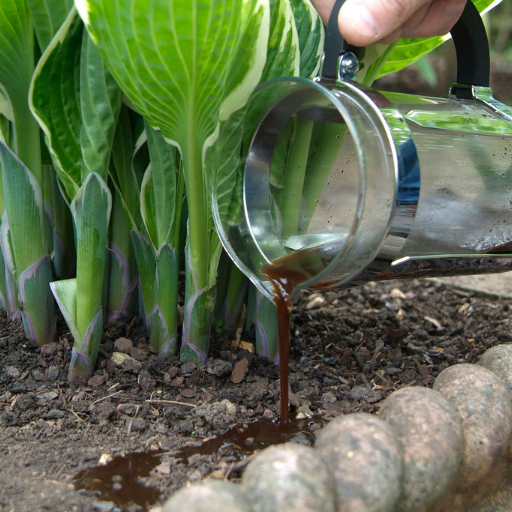
Micronutrients Needed for Good Growth and High Coffee Yield
The coffee plants are deficient in some essential micronutrients which do have an effect on the overall health and productivity of the plants. Micronutrients that are important include zinc, iron, boron, copper and manganese; they are particularly important in some biological functions of the plant. Zinc is essential for the activation of many enzymes and for protein formation. Iron is a basic component of chlorophyll and is also vital in energy transfer processes in the plant. Boron is necessary for cell wall structures and new buds and flowers to form during reproductive growth. Copper also has a function in photosynthesis and has a role in plant disease resistance. Lastly, manganese takes place in photosynthesis, respiration and initrogen assimilation Maintaining the general plant condition by measuring the soil nutrient content regularly and applying fertilizers to rectify any deficiencies as necessary is important.
Signs of Lack of Nutrients in Growing Coffee Plants
Coffee plants specifically exhibit signs related to the nutrient they are deficient in. For instance, lack of chlorophyll in the leaves resulting in yellowing may be due to iron or manganese deficieny, which is called chlorosis. Necrosis of leaves may also occur where there are dead spots on the leaves and those are typical in cases where a potassium or calcium deficiency is present. In the case where boron is deficient, leaves become brittle and buds grow poorly. If zinc is deficient however the leaves develop in size but chlorosis develops around the veins of the leaves. If multiple micronutrients are deficient, the growth of the plants will be stunted and their vigor will be poor. Therefore, regular soil testing and specific fertilization should be done to rectify these deficiencies so that coffee plants are healthy and the yields are at their optimal levels, which is essential for farmers.
Utilization of coffee grounds as a Fertilizer
Coffee grounds can be regarded as an outstanding organic substance that can enhance the soil with essential nutrients. Plants, such as coffee plants, are especially high in nitrogen, a vital plant nutrient that improves soil’s fertility when incorporated into compost or native soil. They also influence the improvement of soil structure, which enhances water-holding capacity as well as beneficial microbial activity. It is important to, however, limit the amount incorporated into the soil, as they may increase the soil’s acidity, which may not be suitable for plants. Given the high intrinsic acidity of coffee grounds, it is prudent to routinely check the soil’s pH levels and combine them with other organic material. Coffee grounds, together with soil organisms, compost or mulch can be used as alternative means of improving the health of the garden without damaging the environment.
When to Fertilize Coffee Plants for Maximum Yield?
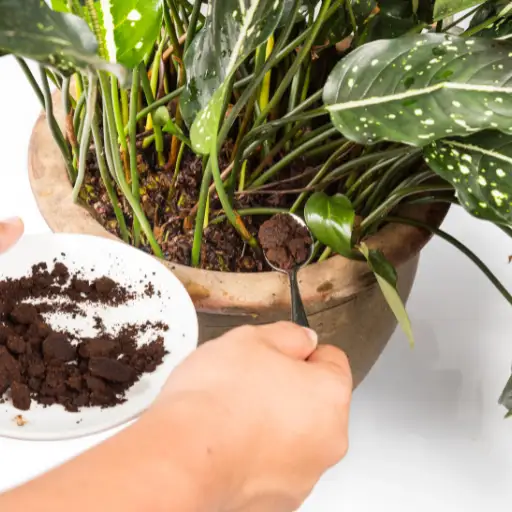
Schedule of Fertilization During the Growth Period
In order to achieve optimal yields during the growth period, coffee plants must be fertilized every six to eight weeks. Start early in spring, as the new growth begins, using a balanced fertilizer that contains nitrogen, phosphorus, and potassium nutrients. Fertilizer application in small but regular doses during the growing months aids development of the plants and production of fruit. Similarly, these appropriate micronutrients such as magnesium and iron can be used to enhance the growth of leaves and general plant health. Adapt the interval and rate of fertilization to the requirements of the soil and plants, also consider the deficiencies noted. Active control and modifications allow afor chieving higher yields and support the health of coffee plants during the entire season.
When is the Best Time to Fertilize for the Coffee’s Bloom
Most people recommend fertilizing the coffee plants a little time before the blooming stage begins. This time is usually during the late winter to spring seasons, although it varies based on the carea’s climatic conditions Phosphorus is a vital element for the formation of flowers and thus, a high-phosphorus fertilizer is recommended at this stage. However, care must be taken to sprinkle fertilizer around the base of the plant without concentrating on just one area, and then watering so as to prevent undue burning of nutrients within the plant. This method also encourages strong flowering when the time comes for the fruit to be produced later in the year. Also, planned and systematic testing of the soil reduces the guesswork in timing and setting the amounts of the fertilizers to suit the particular plan and soil conditions.
However, switching to the second stage, more relevant topic here is one related to plant growth stages of the coffee plant in detail the growth characteristics of the plant and their specificity towards any kind of plant nutrient.
Importance of Variation in Fertilizer Use According to Plant Development
Considering its various developmental stages, the application of plant fertilization is essential in ensuring the maximum health and productivity of coffee plants. Start with a nnitrogen-richfertilizer in ethe arly vegetative growth stage. Then once the plants approach the transition to the flowering stage, apply fertilizers that are high in phosphorus. During stup undergoing fruit development, a balanced fertilizer can be given to enable further growth and ripening of the fruits. Watch for other indicators like leaf pigmentation to adjust the nutrient levels, even within a specific plant growth stage. Regular checks of soils can help in establishing the absence of certain soil elements or presence of others in an unnecessary quantity, thus allowing further special designed planting fertilization schemes to raise the yield.
How to Repot and Transplant Coffee Plants?
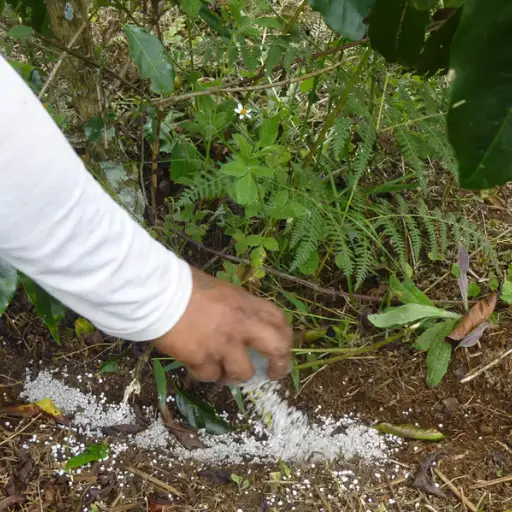
Selecting the Appropriate Potting Mix for Coffea Arabica
Selecting the right potting mix for Coffea Arabica plants is about finding the right balance as a combination that is not overly moist or too dry. A mix with peat moss, perlite and vermiculite has the right proportions for meat. Since peat moss also retains moisture, perlite and vermiculite facilitate drainage and aeration. Adding a small amount of organic matter such as compost can also help to provide the nutrients needed to encourage better growth in the plants. I ensure the mix maintains this characteristic as Coffea Arabica grows best in slightly acidic soils. Following these principles, I try to create a growing medium that is also very wampum for my coffee plants.
Signs It Is Time To Repop Coffee Plant
It becomes time to repot my coffee plant whenever it has outgrown its current pot. One such sign includes roots that have started to grow and protrude from the drainage holes at the bottom of the pot, which means that the plant may be root bound. If the growth rate of the plant seems to have slowed down significantly, this is also an abnormal sign which should raise eyebrows, taking into account the care and nutrition offered to the plant. Likewise, if water tends to easily leach from the soil without being soaked up, it could mean that the plant has out grown its pot or needs more space to grow properly. Through observation of these signs, I will promote better growth of my coffee plant.
Methods of transplanting coffee seedlings safely
The flowering season for coffee trees is when fruiting and flowering trees, have to stay dormant. In order to do that, the first thing I do is set the target date before such events. For the ensuing coffee plants, the procedures differ slightly, in this case, I do not put the coffee plants in dry soil. First of all, I transplant them a day before. I make an effort to keep the plant static during the transport of the plant’s head. The head should not touch the soil; my hands should hold the head and lower neck. The interaction with the water has the same goal: love the soil, but avoid saturating the plant. Wait two to three hours and remove the plants from the pots. Prepare soil, new water, soil mix and other ingredients in a new mixing pot that is precisely one size larger than the previous one. Once the composite is cured, fill in. Gently arrange the block deep inside. Plants do not like being placed on top of the block at any depth. Fill in the gap and balance it.
Reference sources
- ICL Growing Solutions – This source discusses the use of composted manure, organic materials, and essential nutrients like phosphorus, calcium, and magnesium for coffee plants. Read more here.
- Gardening Calendar – This guide highlights the importance of micronutrients such as zinc, iron, copper, and others for coffee plant growth. Explore the details here.
- Greg App – Offers practical advice on fertilizing Arabian Coffee Plants, emphasizing the timing and type of fertilizer to use. Check it out here.
These sources should help validate the feasibility of your topic for readers.
Frequently Asked Questions (FAQs)
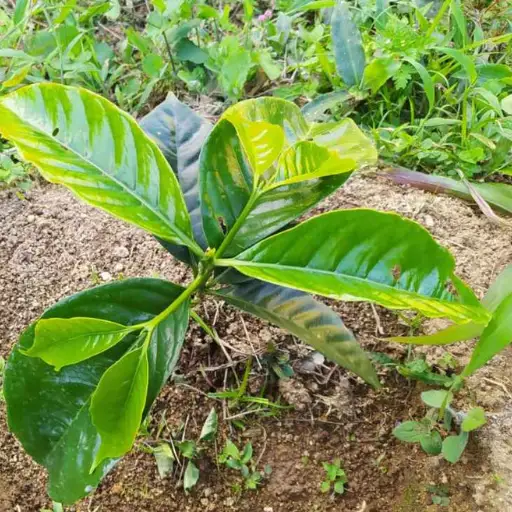
Q: How do I make sure my coffee plants produce leaves that are glossy and dark green in color?
A: To encourage your coffee plants to produce dark green and glossy leaves, apply an expertly prepared fertilizer emphasizing amino acids and plant them in moist soil and high humidity. Additionally, frequent feeding in the growing season will help keep their color.
Q: What should I consider when buying a fertilizer for tndoor coffee plants?
A: When fertilizing indoor coffee plants, use a slow-release fertilizer designed for houseplants. It is advisable to consider one that incorporates key growth and blooming nutrients that will help the plants produce fruit.
Q: How often do I need to fertilize my robusta coffee plants?
A: Generally, Robusta coffee plants benefit from fertilization every 2 to 3 months during the growing season. However, circumstances and changes in the plants’ and fertilizer’s growth stages need to be considered when making frequency adjustments.
Q: What type of fertilizer can I use on my coffee plants, can I use regular fertilizers for agricultural purposes on my coffee plants?
A: Agronomical fertilizers can be applied to coffee plants, but care should be taken to use fertilizer that will suit the coffee plant’s growth stage. For maximum yield, agronomical fertilizers appropriate to the crop requirements of coffee plants should be sought.
Q: What are the signs that my coffee plants aren’t getting the necessary nutrients?
A: A number of common and tell-tale signs may include the yellowing of leaves, brown spots on foliage, and stunted or weak growth among coffee plants. In such cases, changing the fertilization schedule for the coffee plants is worthwhile.
Q: How does the levels of coffee yields and the amount of coffee beans grown get influenced by application of fertilizers?
A: Fertilizers are a crucial aspect for coffee production and the yield that is always expected from the plants. When plants are nourished well, they are able to grow strong and many flowers can form. Thus, it is arguable that strong and healthy plants increase the amount of coffee cherry fruits and hence the number of beans harvested.






